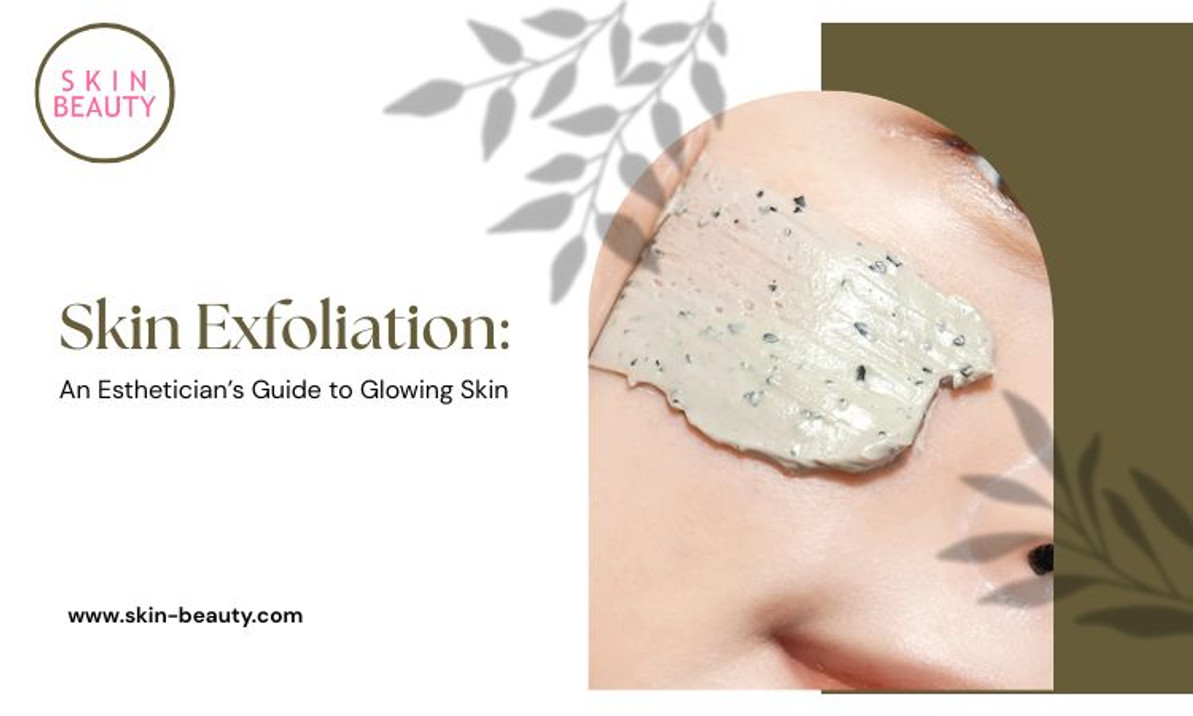Exfoliation for Face
Exfoliation for Face: An Esthetician’s Guide to Glowing Skin
As a licensed esthetician, one of the most common questions I get is: "How do I properly exfoliate my face?" Whether you're battling dull skin and breakouts or just want that fresh, smooth glow, exfoliation is your skin’s best friend—when done right.
In this guide, I’ll walk you through everything you need to know about facial exfoliation—from the different types to how often to exfoliate—and I’ll recommend some top-rated exfoliators available at Skin-Beauty.com to get you started.
What Is Exfoliation and Why Is It Important?
Exfoliation is the process of removing dead skin cells from the surface of your skin. Our skin naturally sheds cells, but sometimes this process slows down due to age, environment, or skincare buildup. When that happens, your skin can look dull, feel rough, and become more prone to clogged pores and breakouts.
Benefits of Exfoliation:
- Reveals brighter, smoother skin
- Allows products like serums and moisturizers to absorb better
- Helps reduce the appearance of fine lines and discoloration
- Keeps pores clean and minimizes blackheads and acne
Types of Facial Exfoliation
There are two main types of exfoliation for the face: physical and chemical.
Physical Exfoliation
Physical exfoliants involve using a scrub or exfoliating face tool to manually buff away dead cells to improve skin texture.
Great for: Normal to oily skin types (avoid if you have active acne breakout or sensitivity)
Top Picks:
- PCA Skin Daily Exfoliant – A gentle yet effective option with smooth beads that won’t irritate. It’s ideal for a quick skin refresh 2-3 times a week.
- Glo Skin Beauty Brightening Polish – Combines jojoba beads and bamboo spheres to smooth texture and even tone.
Chemical Exfoliation
Chemical exfoliants use ingredients like alpha hydroxy acids (AHAs) (like glycolic or lactic acid), beta hydroxy acids (BHAs) (like salicylic acid), and enzymes to dissolve dead skin cells gently.
Best for: Sensitive, dry, acne-prone, and mature skin types
Top Picks:
- Skin Script Glycolic and Retinol Pads – Pre-soaked pads with glycolic acid and retinol to boost cell turnover. Ideal for anti-aging and acne concerns.
- Rhonda Allison Pumpkin Cleanser – This enzyme-rich cleanser offers gentle exfoliation with a delicious fall scent.
How Often Should You Exfoliate For Radiant Skin?
As a general rule:
- Normal/Combination Skin: 2–3 times per week
- Dry/Sensitive Skin: 1–2 times per week
- Oily/Acne-Prone Skin: 3 times per week (with gentle formulas)
Esthetician tip: Over-exfoliating can damage your skin barrier, leading to irritation and breakouts. Always listen to your skin.
Signs You’re Over-Exfoliating On Dry Skin and Sensitive Skin
If your skin feels:
- Tight or squeaky after washing
- Red and inflamed
- Extra sensitive or stinging after applying skincare
It’s time to scale back. Switch to a gentler exfoliator or reduce how often you exfoliate.
When to Exfoliate: Morning or Night?
I recommend exfoliating at night, since your skin regenerates while you sleep. Plus, exfoliating can make your skin more sensitive to the sun, so always follow up with SPF the next day.
Step-by-Step: How to Safely Exfoliate Your Face In Your Skin Care Routine
- Cleanse your face to remove makeup and dirt.
- Apply your exfoliant on cleansed skin (scrub, peel, pad, etc.) as directed.
- Gently massage in circular motions if it’s a physical scrub—no need to press hard.
- Rinse off with lukewarm water (never hot).
- Moisturize to replenish your skin’s barrier.
- Apply SPF in the morning if you exfoliated the night before.
Final Thoughts: Exfoliation for a Radiant, Healthy Complexion
When done right, exfoliation is one of the most transformative steps in your skincare routine. As a licensed esthetician, I always stress the importance of personalizing your exfoliation schedule and products to your skin’s unique needs.
If you’re unsure where to start, shop professional-grade and medical-grade exfoliants now at Skin-Beauty.com—your skin will thank you later.
Need help choosing the best exfoliant for your skin type?
Feel free to reach out to our skincare experts or drop your questions in the comments below!
Recent Posts
-
Mandelic Acid Peel Benefits
Mandelic Acid Peel: The Gentle Exfoliant Your Skin Will Love If you're looking to refresh your compl …May 22nd 2025 -
Exfoliation for Face
Exfoliation for Face: An Esthetician’s Guide to Glowing Skin As a licensed esthetician, one of …May 15th 2025 -
Coenzyme q10 Benefits For Skin
Coenzyme q10 Benefits For Skin Why I Recommend Coenzyme Q10 (Ubiquinone) for Radiant, Resilient Skin …May 9th 2025



